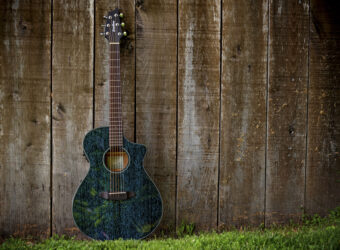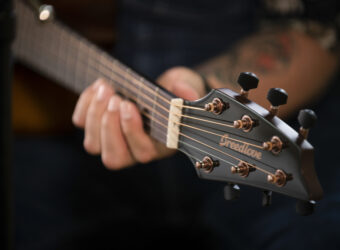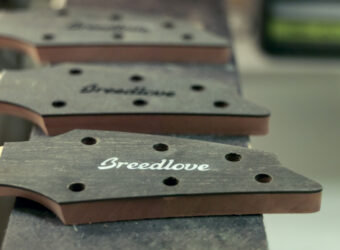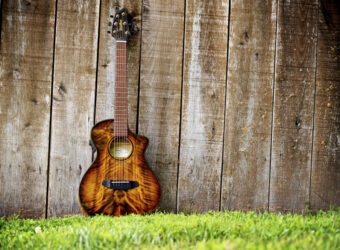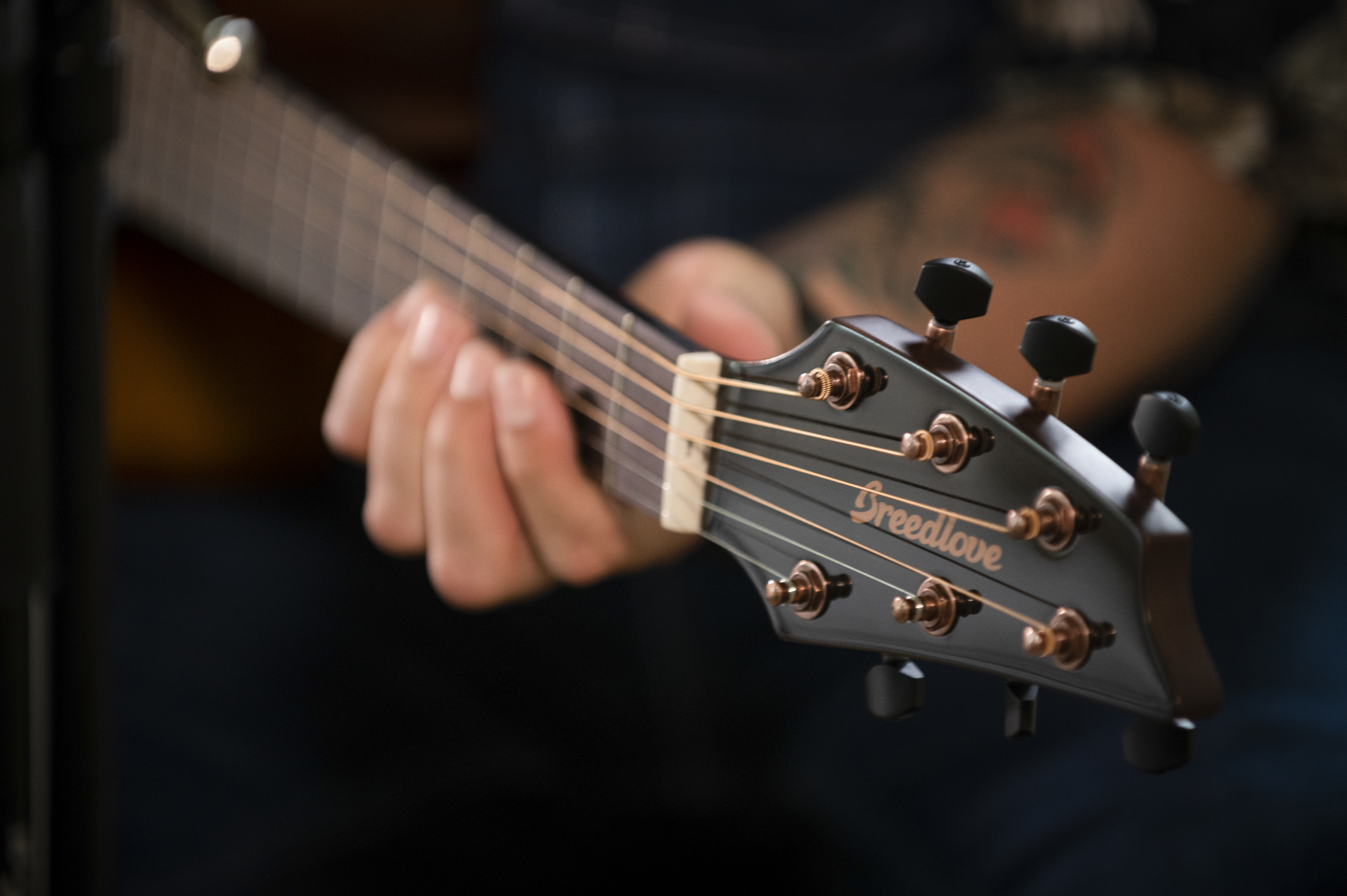 An acoustic guitar’s headstock is more than just what holds the tuning machines. It’s the calling card of the guitar’s builder. It’s the thing that, with one glance, tells you exactly what you’re looking at. Martin’s squared-off shape, Gibson’s open book, and Fender’s iconic scroll prove the point. And we think the Breedlove Asymmetrical Headstock – found on our Concert and Companion models – is up there with the best of them.
An acoustic guitar’s headstock is more than just what holds the tuning machines. It’s the calling card of the guitar’s builder. It’s the thing that, with one glance, tells you exactly what you’re looking at. Martin’s squared-off shape, Gibson’s open book, and Fender’s iconic scroll prove the point. And we think the Breedlove Asymmetrical Headstock – found on our Concert and Companion models – is up there with the best of them.
(In the above video, the Chapman’s find out why Breedlove Guitars have such a unique headstock design. Learn more about the Breedlove headstocks and other distinctive elements here.)
An acoustic’s headstock is also vital in a guitar’s performance. It can dictate the instrument’s tuning stability, playing feel, and tone. That’s why we put so much time and effort into our design. From how the guitar plays and sounds to how it looks coming out of the case, we took it all into account.
Here we’ll break down the three main ways headstock design affects an acoustic guitar and explain how the Asymmetrical Headstock addresses them.
- Tuning Stability
- String Tension
- Tone
Tuning Stability
If a guitar suffers from tuning instability, there’s a good chance the problem is with the string nut. We’re not only talking about materials and the nut slots themselves. We’re talking about the nut’s design and how it interacts with the headstock layout.
Many 3×3 guitar headstocks cause the strings to fan out between the nut and the tuners. It’s a classic design and has worked for decades. But it is also a significant cause of tuning issues. As the string moves through the nut slot, it’s asked to slide around sharp angles. The result is the string getting hung up – or binding – and not moving freely.
Have you ever heard a loud ping while tuning, only to have the guitar suddenly go extremely sharp or flat? That’s a binding issue.
The Asymmetrical Headstock solves this by letting the strings pass essentially straight through the nut slots. There aren’t any sharp edges or difficult angles for the strings to catch on. This dramatically reduces binding for easier tuning and much better stability when playing.
String Tension
Have you ever wondered why the same strings on two different acoustic guitars can feel so different? The reason is how the guitar’s construction affects its string tension. A lot goes into determining the tension for each guitar, but one of the main elements is the headstock angle.
How far the headstock tilts back from the neck either increases or decreases the amount of pull put on the strings. Too high of an angle, and the strings are pulled too tight, making it uncomfortable to play. Too shallow of an angle, and the guitar’s tone suffers, which we’ll get into in the next section. This is why guitars with straight or shallow headstock angles often have to have string trees. They help mitigate these tonal issues.
We craft every Breedlove featuring our Asymmetrical Headstock with a 17-degree tilt. When combined with the instruments’ scale length, we find it is the optimal balance between a clear, powerful sound and a slinky comfortable playing experience.
Tone
You’d be amazed how much a headstock’s design impacts the tone of an acoustic guitar. That makes sense when you consider that the nut and tuners are two of the three places your strings contact the instrument.
Playing a short-scale guitar is a great way to experience what we’re talking about. These guitars’ smaller dimensions offer a much looser tension, resulting in a rounder tone with fewer harmonics and less sustain. It’s a great sound, for sure. But it’s not generally considered optimal when it comes to acoustic guitars.
Through design choices like headstock angle and straight string pull, our Asymmetrical Headstock balances all of these aspects. Not only will a Breedlove stay in tune and feel great under your fingers, but the strings put just enough pressure on the nut to bring the entire instrument to life.
It’s All About the Look, Tone, and Feel
An acoustic guitar’s headstock is a critical element in its design. You get the string pull wrong, and you’ll deal with frustrating tuning issues. Get the angle wrong, and the guitar won’t play well. Worst of all, it won’t sound good. But get it all right, and you have a Breedlove.
